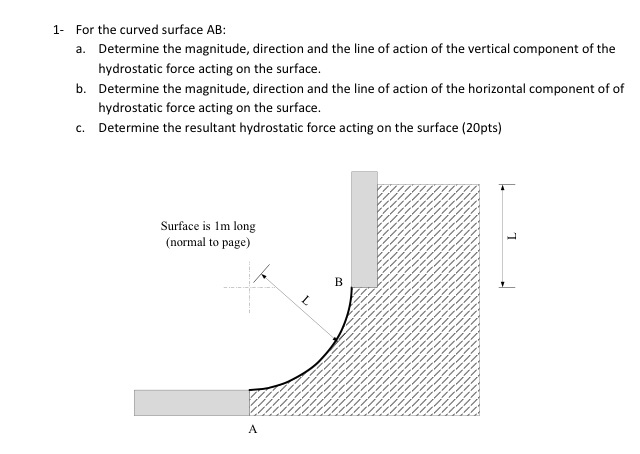

Hydrostatic Pressure on an Inclined Surface Hydrostatic Force on a Vertical Plane Surface This force will act vertically downward and through the center of pressure This leads to the conclusion that the resultant force on horizontal surface due to that pressure can be computed from the simple product of pressure times the area of interest, i.e.


For horizontal plane submerged in a liquid, the pressure, P, will be equal at all points of the surface.The horizontal and vertical force components can be vector composed, giving in general a single vector plus a moment. The vertical force passes through the centroid of the vertical (axis) cylinder of fluid with director represented by the contour of the surface. By considering two directions in the horizontal plane, the corresponding two horizontal components can be determined and vector composed to calculate the total horizontal force acting on the surface, resulting, in general, in a single horizontal vector plus a moment which is required to render them coplanar. A horizontal component of the force passes through the centroid of the vertical projection of the surface on a plane normal to the horizontal direction considered. It is also convenient to resolve the total force acting on the surface into horizontal and vertical components. In practice, it is convenient to adopt integral balance equation for a control volume partly (or completely) delimited by the surface, and then to balance the forces acting on the external surface and body forces. If the surface at contact with the fluid is curved, the action of the fluid can be computed by integrating the elementary forces due to the local pressure by the infinitesimal area of the surface.


 0 kommentar(er)
0 kommentar(er)
